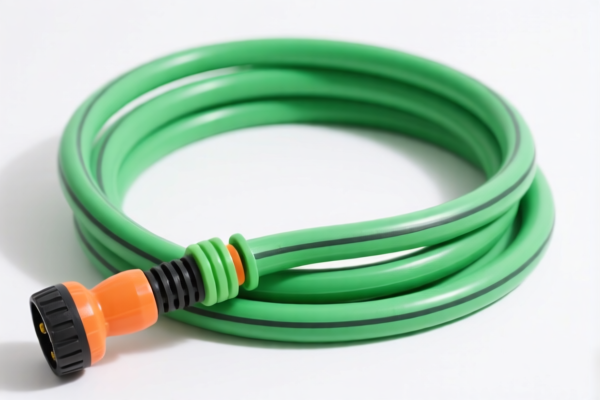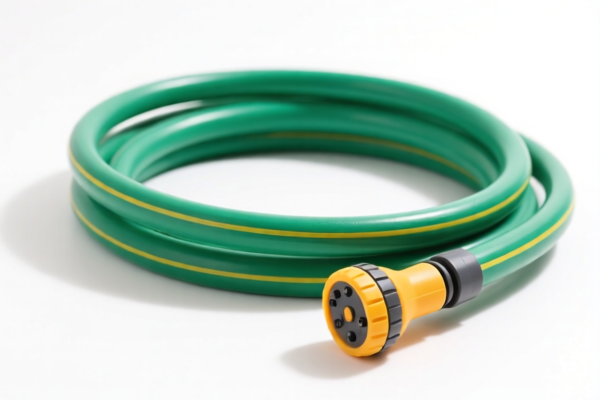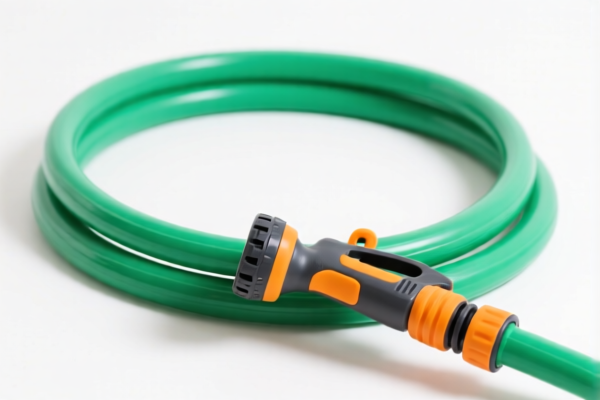| HS Code | Official Doc | Tariff Rate | Origin | Destination | Effective Date |
|---|---|---|---|---|---|
| 4009410000 | Doc | 57.5% | CN | US | 2025-05-12 |
| 4009420050 | Doc | 40.0% | CN | US | 2025-05-12 |
| 4016990500 | Doc | 40.9% | CN | US | 2025-05-12 |
| 7020006000 | Doc | 60.0% | CN | US | 2025-05-12 |
| 7020006000 | Doc | 60.0% | CN | US | 2025-05-12 |
| 3917320050 | Doc | 58.1% | CN | US | 2025-05-12 |
| 3917390050 | Doc | 33.1% | CN | US | 2025-05-12 |
| 3926909989 | Doc | 42.8% | CN | US | 2025-05-12 |
| 6306905000 | Doc | 34.5% | CN | US | 2025-05-12 |
| 6306901000 | Doc | 33.5% | CN | US | 2025-05-12 |
| 6305900000 | Doc | 43.7% | CN | US | 2025-05-12 |
| 6305390000 | Doc | 45.9% | CN | US | 2025-05-12 |




Garden Hoses
Garden hoses are flexible tubes used to convey water for irrigation, cleaning, and various other outdoor applications. They are a common tool in residential and commercial landscaping and gardening.
Materials
Garden hoses are constructed from a variety of materials, each offering different properties in terms of durability, flexibility, weight, and cost:
- Rubber: Traditionally made from natural rubber, these hoses are known for their durability and flexibility, even in colder temperatures. They are typically heavier and more expensive than other types.
- Vinyl: A common and affordable option, vinyl hoses are lightweight and easy to handle. However, they are less durable than rubber hoses and can become kinked or brittle over time, particularly with exposure to sunlight and extreme temperatures.
- Reinforced Vinyl: These hoses incorporate reinforcing layers (often nylon or polyester mesh) to increase strength and resistance to bursting. They offer a balance between cost and durability.
- Polyurethane: A lighter and more flexible alternative to rubber, polyurethane hoses are also resistant to abrasion and kinks. They are generally more expensive than vinyl but offer improved performance.
- Expandable/Soaker Hoses: Constructed from a fabric cover encasing an expandable inner tube, these hoses expand significantly when water pressure is applied. Soaker hoses are porous and allow water to seep directly into the soil.
- Hybrid: Combinations of materials (e.g., rubber and vinyl) are also common, aiming to combine the benefits of different materials.
Purpose and Function
The primary function of a garden hose is to transport water from a water source (typically a faucet) to a desired location. Specific applications include:
- Irrigation: Watering lawns, gardens, and plants.
- Cleaning: Washing cars, patios, driveways, and other outdoor surfaces.
- Filling: Refilling ponds, pools, or other water features.
- Other: Powering pressure washers (with appropriate fittings), rinsing tools, and general outdoor water needs.
Usage Scenarios
Garden hoses are used in a wide range of outdoor settings:
- Residential: Home gardens, lawns, car washing, cleaning.
- Commercial: Landscaping, agriculture, construction, cleaning services.
- Recreational: Washing pets, filling pools, outdoor games.
Common Types
- Standard Garden Hose: Typically 5/8 inch diameter, available in various lengths (25, 50, 75, 100 feet).
- Heavy-Duty Garden Hose: Constructed with thicker materials and reinforcing layers for increased durability and pressure resistance.
- Drinking Water Safe Hose: Made from materials that are certified safe for human and pet consumption. Often used for filling RVs or providing potable water.
- Flat Hose: Designed to lay flat when not in use, making them easy to store.
- Expandable Hose: Lightweight and compact when not in use, expanding to several times their original length when water is turned on.
- Soaker Hose: Porous hoses that slowly release water along their entire length, ideal for efficient watering of gardens and flower beds.
- Sprinkler Hoses: Hoses with pre-installed or attachable sprinkler heads for automated watering.
Garden hoses generally fall under the category of tubes, pipes, and hoses made of vulcanized rubber, or plastics, used for conveying fluids. Here's a breakdown of relevant HS codes based on the provided information:
- 4009410000: This HS code covers tubes, pipes, and hoses of vulcanized rubber other than hard rubber, reinforced or otherwise combined with other materials, without fittings. This would apply to garden hoses made of vulcanized rubber that are not pre-fitted with nozzles, connectors, or other attachments. The total tax rate is 57.5% (Basic tariff: 2.5%, Additional tariff: 25.0%, Post-April 2, 2025, Additional tariff: 30.0%).
- 4009420050: This HS code covers tubes, pipes, and hoses of vulcanized rubber other than hard rubber, reinforced or otherwise combined with other materials, with fittings. If the garden hose includes pre-attached nozzles, connectors, or other fittings, this code applies. The total tax rate is 40.0% (Basic tariff: 2.5%, Additional tariff: 7.5%, Post-April 2, 2025, Additional tariff: 30.0%).
- 3917320050: This HS code covers tubes, pipes and hoses and fittings therefor of plastics, other tubes, pipes and hoses, other, not reinforced or otherwise combined with other materials, without fittings. This applies to garden hoses made of plastic that are not pre-fitted with nozzles, connectors, or other attachments. The total tax rate is 58.1% (Basic tariff: 3.1%, Additional tariff: 25.0%, Post-April 2, 2025, Additional tariff: 30.0%).
- 3917390050: This HS code covers tubes, pipes and hoses and fittings therefor of plastics, other tubes, pipes and hoses, other other, other. This applies to garden hoses made of plastic. The total tax rate is 33.1% (Basic tariff: 3.1%, Additional tariff: 0.0%, Post-April 2, 2025, Additional tariff: 30.0%).
Important Considerations:
The classification between HS codes 4009410000 and 4009420050 depends on whether the garden hose is supplied with or without fittings. Similarly, the classification between HS codes 3917320050 and 3917390050 depends on whether the garden hose is made of plastic.
It is crucial to accurately determine the material composition (vulcanized rubber or plastic) and the presence of fittings to ensure correct HS code selection and avoid potential customs issues.
Customer Reviews
No reviews yet.